An Implant procedure is essentially a titanium post that is surgically placed in the jaw. A prosthesis (artificial tooth/teeth) is attached to the post. Implants are primarily used to replace missing teeth. They are of various kinds and made of a bio-friendly material which is principally titanium.
https://www.facebook.com/drfut
https://www.facebook.com/drfut
https://www.facebook.com/drfut
Anyone with one or more missing teeth can undergo dental Implants provided adequate bone and healthy gum tissues are present. A thorough medical and dental health examination is required to be done by the dentist before advising Implants.
Dental Implant procedure is essentially a 2 step procedure; the first step is placing the Implant inside the jaw bone which is done as a single sitting under local anaesthesia. Then there is a waiting period to allow natural bone to grow around the Implant. After healing is complete, the post and artificial teeth are placed on top. In SELECTED cases Implant is done as a Single Step Procedure & final prosthesis is given immediately.
Who is a Candidate?
How long does it take?
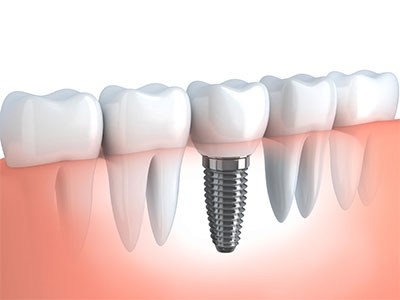
The main advantage of Implant is that at the end of the treatment, the Implant feels and functions like a natural tooth and the patient forgets the presence of any artificial element in the mouth.
The pain, discomfort and aged appearance associated with artificial dentures is eliminated. The looks and speech of the patient remain natural and the chewing efficiency is far superior. Also there is no fear of dentures becoming loose and falling off while eating
Missing teeth can also be replaced by a bridge. In that case, adjacent teeth are shaped and often root canaled to receive the bridge. Advantage of Implants over a conventional bridge is that we do not need to grind the adjacent teeth at all. Hence the anatomy of the natural teeth is maintained, which is very important.
The cost of the treatment depends upon the type and number of implants being used, Surgical procedures like gum surgery, bone grafting and also the type of final Prosthesis to be fabricated. (Prosthesis may be a Crown or a Bridge or a Denture.
The success of implants greatly depends on the health of the surrounding oral tissues. Hence the patients have to be meticulous in maintaining a good oral hygiene and regular follow up
visits to the dentist.
An implant-supported denture is a type of overdenture that is supported by and attached to implants. An implant-supported overdenture is attached to implants, while a regular denture rests on the gums, is not supported by implants, and tends to fit less firmly in the mouth.
An implant-supported denture is used when a person doesn't have any teeth in the jaw, but has enough bone in the jaw to support implants. An implant-supported denture has special attachments that snap onto attachments on the implants.
Implant-supported dentures usually are made for the lower jaw because regular dentures tend to be less stable there. Usually, a regular denture made to fit an upper jaw is quite stable on its own and doesn't need the extra support offered by implants. However, you can receive an implant-supported denture in either the upper or lower jaw.
You can remove an implant-supported denture easily. Some people prefer to have fixed (permanent) crown and bridgework in their mouths that can't be removed. Your dentist will consider your particular needs and preferences when suggesting fixed or removable options.
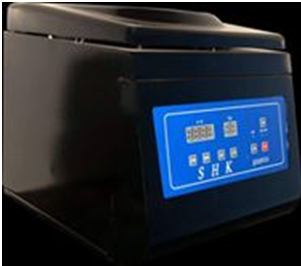
Platelet Rich Fibrin (PRF)
Platelet Rich Fibrin is a by-product of blood that is exceptionally rich in platelets. PRF has long been used in hospitals to accelerate the body’s own healing process, but it is only fairly recently that advances in technology have allowed this same technique to be used in the dental office.
The blood platelets perform several essential functions in the body, including blood clot formation and the release of growth factors that help to heal wounds. These growth factors stimulate the stem cells to produce new host tissue as quickly as possible, which is why platelet rich fibrin is so effective in the post-treatment healing process.
There are several ways in which PRF can be used in clinical dentistry:
Bone Grafting For Implants – This includes closure of a cleft lip and cleft palate deformities, sinus lifts, ridge augmentation, and both inlay and onlay grafts.
Bone Repair – PRF can be used in facial trauma reconstruction, repairing of defects due to tooth removal, or the removal of growths and cysts.
Fistula Repair – This includes the repair of fistulas between the mouth and the sinus cavity.
Reasons for platelet rich fibrin treatment
Platelet rich fibrin application is now widely used to expedite the post-procedure healing process and is completely safe. Since the blood used will come from the patient’s own body, disease transmission is not a factor. Almost all patients report a much greater degree of comfort immediately after their procedure. There are also several more distinct advantages of PRF:
· Lower Infection Risk – PRF is secured on the wound after the procedure by the dentist and actually seals the wound away from infectious agents, lowering the risk of problems.
· Accelerated Healing – The saturation of the wound with PRF helps increase tissue synthesis due to its growth factors, and this in turn results in faster tissue regeneration. Speedier healing decreases the risk of later infections, complications, and discomfort.
· Safety and Convenience – Disease transmission is non-issue since the blood is harvested from the patient’s own blood supply. The amount of blood needed is small and can be collected during a routine outpatient procedure.
What does platelet rich fibrin treatment involve?
The dentist will initially assess if your candidate for PRF treatment. Patients with blood clotting disorders will be unable to take advantage of this treatment. A small (about 2 oz) sample of your blood will be collected during a scheduled outpatient treatment. The blood will be placed into a centrifuge to separate the plasma and fibrin from the red blood cells. The centrifuge concentrates the platelets, fibrin and white blood cells which contain a growth factor called Platelet Derived Growth Factor (PDGF).
Immediately after suturing the wound, the dentist will apply the PRF to the surgical area in a high concentration. This will expedite your healing and decrease the amount of discomfort following the surgery. The dentist will provide aftercare instructions pertaining to the surgery and a prescription for pain medication as required.
If you have any questions about treatment with platelet rich fibrin or would like to find out if you are a candidate and can benefit from this treatment, please contact our office today to schedule an appointment.
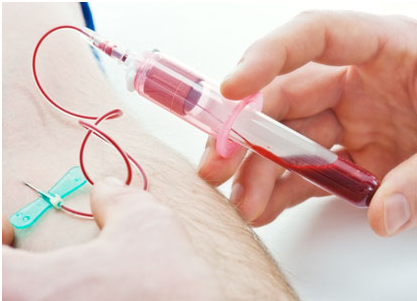
Frequently Asked Questions about PRF
Is PRF safe? Yes. During the outpatient surgical procedure a small amount of your own blood is drawn out via the IV. This blood is then placed in the PRF centrifuge machine and spun down. In less than 15 minutes, the PRF is formed and ready to use.
Should PRF be used in all bone-grafting cases? Not always. In some cases, there is no need for PRF. However, in the majority of cases, application of PRF to the graft will increase the final amount of bone present, in addition to making the wound heal faster and more efficiently.
Will my insurance cover the costs? Unfortunately not. The cost of the PRF application is paid by the patient.
Can PRF be used alone to stimulate bone formation? No. PRF must be mixed with either the patient’s own bone, a bone substitute material such as demineralized freeze-dried bone, or a synthetic bone product.
Are there any contraindications to PRF? Very few. Obviously, patients with bleeding disorders or hematologic diseases do not qualify for this in-office procedure. Check with your surgeon to determine if PRF is right for you.
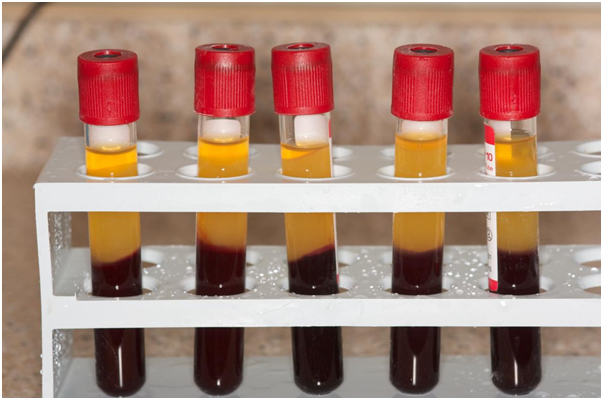
Why All The Excitement About PRF?
PRF permits the body to take advantage of the normal healing pathways at a greatly accelerated rate. During the healing process, the body rushes many cell types to the wound in order to initiate the healing process. Platelets are one of those cell types. Platelets perform many functions, including formation of a blood clot and release of growth factors (GF) into the wound. These growth factors; platelet derived growth factors (PDGF), transforming growth factor beta (TGF), and insulin-like growth factor (ILGF), function to assist the body in repairing itself by stimulating stem cells to regenerate new tissue. The more growth factors released and sequestered into the wound, the more stem cells are stimulated to produce new tissue. Thus, PRF permits the body to heal faster and more efficiently.
A particularly important component is bone morphogenic protein (BMP). It has been shown to induce the formation of new bone in research studies. This is of great significance to the surgeon who places dental implants. By adding PRF to the implant site with bone substitute particles, the implant surgeon can now grow bone more predictably and faster than ever before.
PRF Has Many Clinical Applications
PRF can be used to aid bone grafting for dental implants. This includes sinus lift procedures, ridge augmentation procedures, and palate defects. It can also assist in repair of bone defects created by removal of teeth, or small cysts and repair of fistulas between the sinus cavity and mouth.
PRF Also Has Many Advantages
Safety: PRF is a by-product of the patient’s own blood, therefore, disease transmission is not an issue.
Convenience: PRF can be generated in the doctor’s office while the patient is undergoing an outpatient surgical procedure such as the placement of dental implants.
Faster healing: The supersaturation of the wound with PRF, and thus growth factors, produces an increase of tissue synthesis and faster tissue regeneration.
Cost effectiveness: Since PRF harvesting is done with only 20-50 cc of blood in the doctor’s office, the patient need not incur the expense of the harvesting procedure in hospital or at a blood bank.
Ease of use: PRF is easy to handle and actually improves the ease of application of bone substitute materials and bone grafting products by making them more gel-like.
Missing teeth over a period of time can cause your jaw bone to atrophy, or resorb. This often results in poor quality and quantity of bone suitable for the placement of dental implants as well as long term shifting of remaining teeth and changes to facial structure. Most patients, in these situations, are not candidates for dental implants.
Fortunately, today we have the ability to grow bone where it is needed. This not only gives us the opportunity to place implants of proper length and width, but it also gives us a chance to restore functionality and aesthetic appearance.
Bone grafting can repair implant sites with inadequate bone structure due to previous extractions, gum disease, or injuries. The bone is either obtained from a tissue bank or your own bone is taken from the jaw, hip or tibia (below the knee). Sinus bone grafts are also performed to replace bone in the posterior upper jaw. In addition, special membranes may be utilized that dissolve under the gum to protect the bone graft, as well as encourage bone regeneration. This is called guided bone regeneration, or guided tissue regeneration.
After tooth extraction, if the walls of the socket are very thick, they will usually fill naturally with bone in two to three months. However, when the walls of your socket are very thin (such as in your upper and lower front teeth), this type of healing will not be as predictable. In these situations, a bone graft is often placed at the time of tooth extraction to help your body fill in the empty socket with bone. This step will maintain the width and volume of bone you will need for implant placement several months later.
There may be inadequate bone for implant placement if your tooth was removed many years ago and your bony ridge is extremely thin. In this case, a bone graft can be placed next to the thin bone and allowed to heal for up to six months. After the graft has fused to your pre-existing bone, the ridge will be re-entered and the implant placed. Bone grafting is usually a relatively comfortable office procedure. Many different bone-grafting materials are available, including your own bone.
You may also need bone grafting if the sinus cavities in your upper jaw are very large, or very low, and extend into the tooth-bearing areas. This often occurs when teeth in the back of a person’s upper jaw have been removed many years before, and the amount of bone available for implant placement is limited. A “sinus grafting procedure” is then required. Most often, it is performed in the office with local anesthesia and perhaps sedation. During this procedure, the membrane that lines the sinus will be located and elevated. Bone will then be added to restore the bone height and ensure that dental implants of an adequate length can be placed. This procedure often can be performed at the time of implant placement.
A ridge augmentation is a common dental procedure often performed following a tooth extraction. This procedure helps recreate the natural contour of the gums and jaw that may have been lost due to bone loss from a tooth extraction, or for another reason.
The alveolar ridge of the jaw is the bone that surrounds the roots of teeth. When a tooth is removed an empty socket is left in the alveolar ridge bone. Usually this empty socket will heal on its own, filling with bone and tissue. Sometimes when a tooth is removed the bone surrounding the socket breaks and is unable to heal on its own. The previous height and width of the socket will continue to deteriorate.
Rebuilding the original height and width of the alveolar ridge is not always medically necessary, but may be required for dental implant placement or for aesthetic purposes. Dental implants require bone to support their structure and a ridge augmentation can help rebuild this bone to accommodate the implant.
A ridge augmentation is accomplished by placing bone graft material in the tooth socket. It is often done immediately after the tooth is removed to avoid the need for a second procedure later. Next, the gum tissue is placed over the socket and secured with sutures. Dr may choose to use a space-maintaining product over the top of the graft to facilitate new bone growth. Once the socket has healed, the alveolar ridge can be prepared for dental implant placement.
The maxillary sinuses are behind your cheeks and on top of the upper teeth. These sinuses are empty, air-filled spaces. Some of the roots of the natural upper teeth extend up into the maxillary sinuses. When these upper teeth are removed there is often just a thin wall of bone separating the maxillary sinus and the mouth. Dental implants need bone to hold them in place. When the sinus wall is very thin, it is impossible to place dental implants in this bone.
The key to a successful and long-lasting dental implant is the quality and quantity of jaw bone to which the implant will be attached. If bone loss has occurred due to injury or periodontal disease, a sinus augmentation can raise the sinus floor and allow for new bone formation. A sinus lift is one of the most common bone grafting procedures for patients with bone loss in the upper jaw. The procedure seeks to grow bone in the floor of the maxillary sinus above the bony ridge of the gum line that anchors the teeth in the upper jaw. This enables dental implants to be placed and secured in the new bone growth.
A sinus lift may be necessary if you:
o are missing more than one tooth in the back of your jaw
o are missing a significant amount of bone in the back of your jaw
o are missing teeth due to a birth defect or condition
o are missing most of the maxillary teeth and require support for dental implants
Most commonly, a small incision is made on the premolar or molar region to expose the jaw bone. A small opening is cut into the bone, and the membrane lining the sinus is pushed upward. The underlying space is filled with bone grafting material, either from your own body or from a other sources. Sometimes, synthetic materials that imitate bone formation are used. After the bone is implanted, the incision is sutured and the healing process begins. After several months of healing, the bone becomes part of the patient’s jaw and dental implants can be inserted and stabilized in the newly formed sinus bone.
If enough bone between the upper jaw ridge and the bottom of the sinus is available to sufficiently stabilize the implant, sinus augmentations and implant placement can sometimes be performed as a single procedure. If not enough bone is available, the sinus augmentation will have to be performed first, then the graft will have to mature for up to several months, depending upon the type of graft material used. Once the graft has matured, the implants can be placed.
The sinus graft makes it possible for many patients to have dental implants that previously had no other option besides wearing loose dentures.
Removal of teeth is sometimes necessary because of pain, infection, bone loss, or due to a fracture in the tooth. The bone that holds the tooth in place (the socket) is often damaged by disease and/or infection, resulting in a deformity of the jaw after the tooth is extracted. In addition, when teeth are extracted the surrounding bone and gums can shrink and recede very quickly, resulting in unsightly defects and a collapse of the lips and cheeks.
These jaw defects can create major problems in performing restorative dentistry whether your treatment involves dental implants, bridges, or dentures. Jaw deformities from tooth removal can be prevented and repaired by a procedure called socket preservation. Socket preservation can greatly improve your smile’s appearance and increase your chances for successful dental implants.
Several techniques can be used to preserve the bone and minimize bone loss after an extraction. In one common method, the tooth is removed and the socket is filled with bone or bone substitute. It is then covered with gum, artificial membrane, or tissue, which encourages your body’s natural ability to repair the socket. With this method, the socket heals, eliminating shrinkage and collapse of the surrounding gum and facial tissues. The newly formed bone in the socket also provides a foundation for an implant to replace the tooth. If your dentist has recommended tooth removal, be sure to ask if socket preservation is necessary. This is particularly important if you are planning on replacing the front teeth.
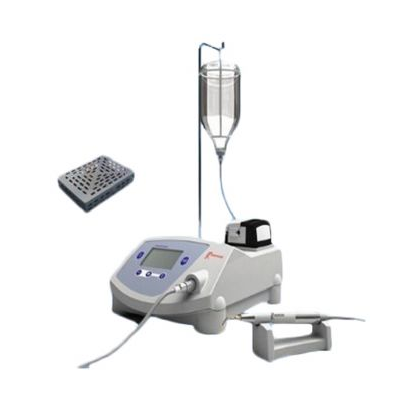
Leading practices such as ours choose to usePiezosurgeryfor our patients. Piezosurgery has been proven to be the safest, most precise and efficient technology for surgical applications from simple extractions to a number of more complex surgeries. Basically, Piezosurgery uses ultrasonic micro-vibrations to gently cut bone without being able to cut softer, more delicate anatomy. Patients report that healing is faster, swelling is greatly reduced and recovery is much more comfortable.
Piezosurgey (ultasonic surgery) has been specifically developed for cutting bone while minimizing trauma to the surrounding soft tissue.Ultrasonic microvibrations employed by the Piezosurgery surgical unit allow the surgeon to perform procedures otherwise not possible.
Piezosurgeryenables the oral surgeon to complete multiple types of procedures in close contact with important soft tissue structures, such as:
· Nerves
· Sinus membranes
· Blood vessels
Piezosurgeyminimizes risk and makes a large array of surgical options available inoral surgeryandimplant-related procedures.